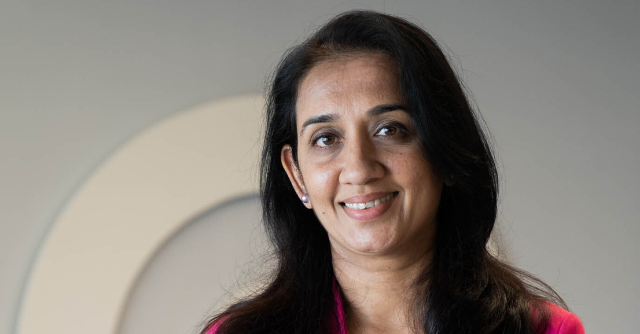
Roopa Acharya on how Target's India GCC is creating better CX using GenAI


Target, a US-based retail corporation, has been operating in India for nearly two decades and is now leveraging generative artificial intelligence (GenAI) to create highly personalised customer experiences. Although Target does not have physical stores in India, it operates a Global Capability Centre (GCC) in Bengaluru. In an interview with TechCircle, Roopa Acharya, VP, Merchandising Engineering, at Target in India, discusses how the team in India is enhancing customer experiences (CX) or 'guest' experience as Target calls them and creating value through GenAI, and more. Edited excerpts:
Can you highlight some of Target's latest technological innovations that enhance customer experience?
Over the years, we have been modernising our technology stack and reinforcing core engineering practices for scalable, secure platforms. Our investment in automation has driven efficiency and expanded our operational capabilities. In recent years, we have been in the process of transforming legacy technology and processes to an automated GenAI and data science-powered technology stack that enables faster innovation. In that sense, GenAI is playing a critical role in Target’s roadmap for growth, and we’re taking a strategic approach to apply this technology across our business operations. Recent advancements from the merchandising tech team include using GenAI to improve item attributes for better purchase accuracy, scaling our pricing system for billions of computations to enhance price transparency and customer loyalty, and developing a chat-enabled negotiation platform for better vendor terms and value for Target.

Can you tell us about a recent technology project undertaken and completed by Target's India team?
One notable project is our price transparency initiative, which significantly improved affordability and price perception among our customers. This effort required us to compute billions of prices in record time. We designed an architecture capable of managing high volume and throughput, particularly during Peak (the busiest retail season in the US). Our pricing architecture has evolved to a modern, event-driven, microservices-based omnichannel system, with recent enhancements streamlining our pricing and promotion ecosystem to consolidate various offers, including those from our loyalty program, Target Circle.
What do you see as the next big trend in retail tech, and how is Target preparing for the same?

I would say, GenAI will have a transformational impact on the retail industry and that's prompting us to enhance our offerings and delivery methods. We are integrating GenAI across our business to improve experiences for guests, vendors, and team members. For instance, our GenAI-powered chatbot, Store Companion, provides instant answers for team members, simplifying their tasks and improving customer interactions. We are also implementing GenAI in our Guided Search feature on Target.com, enabling intuitive, natural language searches and enhancing product display pages with improved summaries and descriptions.
What are your technology goals for the next two years?
In the next two years, our primary goals include deeper integration of data science into our operations and fostering a data science-first mindset. We aim to enhance our team’s expertise while upgrading our technology to fully incorporate GenAI into our platforms. Additionally, we will prioritise modernising our tech stack to better serve customers and vendors, while improving team efficiency.

What significant challenges have you faced as a woman in tech, and how did you overcome them?
Challenges in tech often arise from balancing multiple roles—being a mother, tech leader, wife, and daughter—rather than from technology itself. The biggest challenge I face is finding time for personal growth, whether through courses, coaching, networking, or keeping up with rapid tech changes. I stay updated through quick tech summaries to keep abreast of trends. I also believe in finding good mentors to help you navigate challenges, encourage broader thinking, and provide valuable perspectives. My mentors have helped me see different viewpoints and have pushed me to step outside my comfort zone on various initiatives.
What steps should companies take to foster a more inclusive environment for women in tech?

Organisations need to prioritise inclusivity with a top-down approach that includes training and events, while also empowering teams at the grassroots level. This involves re-evaluating promotion practices, providing mentorship, and supporting women's advancement to leadership roles. At Target in India, diversity, equity, and inclusion are embedded in all processes from recruitment to career advancement. Our inclusive policies and collaborative culture encourage women to develop leadership skills and pursue diverse career paths. Employee Resource Groups play a vital role in fostering this inclusive environment, and ongoing support for these efforts is essential.
